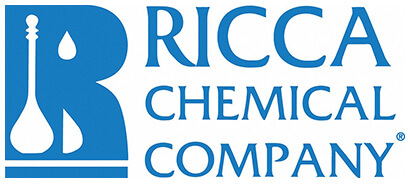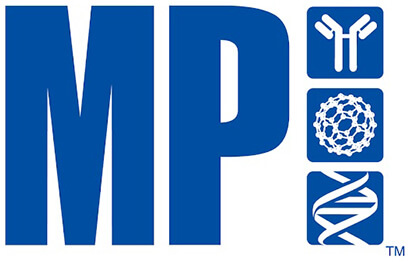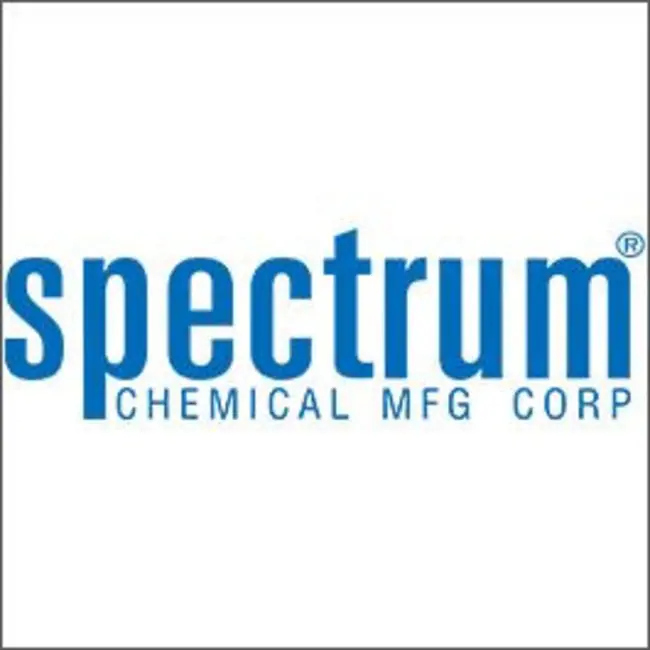Ambient
Showing 89201–89250 of 146505 results
-

GenCRISPR™ Cas9 v1.1
$162.15 Add to cart View Product DetailsThe GenCRISPR™
Cas9 v1.1 can be formed
with the guide RNA into a ribonucleoprotien (RNP) complex. The use of an RNP
complex to perform gene editing has been shown to reduce the challenges
encountered with other CRISPR gene editing techniques such as viral and plasmid
delivery. Challenges include off-target effects, cell viability and transcription/translational
challenges.
GenCRISPR™
Cas9 v1.1 is a tag free nuclease produced by expression in an E. coli strain carrying a plasmid
encoding the Cas9 gene from Streptococcus
pyogenes with a biparticle nucleus localization signal (BPNLS) at both
N-terminal and C-terminal. It has been reported that BPNLS is able to improve
the gene editing efficiency. -

GenCRISPR™ Cas9 v1.1
$552.00 Add to cart View Product DetailsThe GenCRISPR™
Cas9 v1.1 can be formed
with the guide RNA into a ribonucleoprotien (RNP) complex. The use of an RNP
complex to perform gene editing has been shown to reduce the challenges
encountered with other CRISPR gene editing techniques such as viral and plasmid
delivery. Challenges include off-target effects, cell viability and transcription/translational
challenges.
GenCRISPR™
Cas9 v1.1 is a tag free nuclease produced by expression in an E. coli strain carrying a plasmid
encoding the Cas9 gene from Streptococcus
pyogenes with a biparticle nucleus localization signal (BPNLS) at both
N-terminal and C-terminal. It has been reported that BPNLS is able to improve
the gene editing efficiency. -

GenCRISPR™ Cas9 v1.2
$884.06 Add to cart View Product DetailsThe GenCRISPR™
Cas9 v1.2 can be formed
with the guide RNA into a ribonucleoprotien (RNP) complex. The use of an RNP
complex to perform gene editing has been shown to reduce the challenges
encountered with other CRISPR gene editing techniques such as viral and plasmid
delivery. Challenges include off-target effects, cell viability and transcription/translational
challenges.
GenCRISPR™ Cas9 v1.2 is a tag
free nuclease produced by expression in an E.
coli strain carrying a plasmid encoding the Cas9 gene from Streptococcus pyogenes with a biparticle
nucleus localization signal (BPNLS) at N-terminal and a nucleoplasmin nucleus
localization signal (nucleoplasmin NLS) at C-terminal. It has been reported
that BPNLS and nucleoplasmin NLS are able to improve the gene editing
efficiency. -

GenCRISPR™ Cas9 v1.2
$162.15 Add to cart View Product DetailsThe GenCRISPR™
Cas9 v1.2 can be formed
with the guide RNA into a ribonucleoprotien (RNP) complex. The use of an RNP
complex to perform gene editing has been shown to reduce the challenges
encountered with other CRISPR gene editing techniques such as viral and plasmid
delivery. Challenges include off-target effects, cell viability and transcription/translational
challenges.
GenCRISPR™ Cas9 v1.2 is a tag
free nuclease produced by expression in an E.
coli strain carrying a plasmid encoding the Cas9 gene from Streptococcus pyogenes with a biparticle
nucleus localization signal (BPNLS) at N-terminal and a nucleoplasmin nucleus
localization signal (nucleoplasmin NLS) at C-terminal. It has been reported
that BPNLS and nucleoplasmin NLS are able to improve the gene editing
efficiency. -

GenCRISPR™ Cas9 v1.2
$552.00 Add to cart View Product DetailsThe GenCRISPR™
Cas9 v1.2 can be formed
with the guide RNA into a ribonucleoprotien (RNP) complex. The use of an RNP
complex to perform gene editing has been shown to reduce the challenges
encountered with other CRISPR gene editing techniques such as viral and plasmid
delivery. Challenges include off-target effects, cell viability and transcription/translational
challenges.
GenCRISPR™ Cas9 v1.2 is a tag
free nuclease produced by expression in an E.
coli strain carrying a plasmid encoding the Cas9 gene from Streptococcus pyogenes with a biparticle
nucleus localization signal (BPNLS) at N-terminal and a nucleoplasmin nucleus
localization signal (nucleoplasmin NLS) at C-terminal. It has been reported
that BPNLS and nucleoplasmin NLS are able to improve the gene editing
efficiency. -

GenCRISPR™ ErCas12a Nuclease
$1,060.01 Add to cart View Product DetailsGenCRISPR™ ErCas12a Nuclease is an RNA-guided DNA endonuclease from Eubacterium rectale. It recognizes a T-rich protospacer adjacent motif (PAM) and results in a staggered DNA double-strand break (DSB). After the specific cleavage, Cas12a can also activate collateral cleavage activity towards adjacent non-specific ssDNA sequences. Hence, Cas12a nuclease is a good alternative for Cas9 in certain target DNA editing, and provides a novel strategy for DNA detection.
-

GenCRISPR™ ErCas12a Nuclease
$163.01 Add to cart View Product DetailsGenCRISPR™ ErCas12a Nuclease is an RNA-guided DNA endonuclease from Eubacterium rectale. It recognizes a T-rich protospacer adjacent motif (PAM) and results in a staggered DNA double-strand break (DSB). After the specific cleavage, Cas12a can also activate collateral cleavage activity towards adjacent non-specific ssDNA sequences. Hence, Cas12a nuclease is a good alternative for Cas9 in certain target DNA editing, and provides a novel strategy for DNA detection.
-

GenCRISPR™ ErCas12a Nuclease
$677.06 Add to cart View Product DetailsGenCRISPR™ ErCas12a Nuclease is an RNA-guided DNA endonuclease from Eubacterium rectale. It recognizes a T-rich protospacer adjacent motif (PAM) and results in a staggered DNA double-strand break (DSB). After the specific cleavage, Cas12a can also activate collateral cleavage activity towards adjacent non-specific ssDNA sequences. Hence, Cas12a nuclease is a good alternative for Cas9 in certain target DNA editing, and provides a novel strategy for DNA detection.
-

GenCRISPR™ LbCas12a Nuclease
$163.01 Add to cart View Product DetailsGenCRISPR™ LbCas12a Nuclease is an RNA-guided DNA endonuclease from Lachnospiraceae bacterium. Cas12-family enzymes exhibit two DNase activity modes; besides crRNA-guided cis-cleavage of cDNA targets, these nucleases also catalyze trans-cleavage of non-target ssDNA substrates introduced by target DNA, which has been exploited to develop sensitive technologies for nucleic acid detection.
-

GenCRISPR™ LbCas12a Nuclease
$1,060.01 Add to cart View Product DetailsGenCRISPR™ LbCas12a Nuclease is an RNA-guided DNA endonuclease from Lachnospiraceae bacterium. Cas12-family enzymes exhibit two DNase activity modes; besides crRNA-guided cis-cleavage of cDNA targets, these nucleases also catalyze trans-cleavage of non-target ssDNA substrates introduced by target DNA, which has been exploited to develop sensitive technologies for nucleic acid detection.
-

GenCRISPR™ LbCas12a Nuclease
$677.06 Add to cart View Product DetailsGenCRISPR™ LbCas12a Nuclease is an RNA-guided DNA endonuclease from Lachnospiraceae bacterium. Cas12-family enzymes exhibit two DNase activity modes; besides crRNA-guided cis-cleavage of cDNA targets, these nucleases also catalyze trans-cleavage of non-target ssDNA substrates introduced by target DNA, which has been exploited to develop sensitive technologies for nucleic acid detection.
-

GenCRISPR™ LbuCas13a Nuclease
$1,060.01 Add to cart View Product DetailsGenCRISPR™ LbuCas13a Nuclease is an RNA-guided, RNA-targeting CRISPR enzyme, commonly referred to as LbuC2c2. This Cas13a protein can be applied to detect single RNA molecules with proven high specificity. Recently, Cas13a has been leveraged as a diagnostic nucleic acid detection tool.
-

GenCRISPR™ LbuCas13a Nuclease
$163.01 Add to cart View Product DetailsGenCRISPR™ LbuCas13a Nuclease is an RNA-guided, RNA-targeting CRISPR enzyme, commonly referred to as LbuC2c2. This Cas13a protein can be applied to detect single RNA molecules with proven high specificity. Recently, Cas13a has been leveraged as a diagnostic nucleic acid detection tool.
-

GenCRISPR™ LbuCas13a Nuclease
$677.06 Add to cart View Product DetailsGenCRISPR™ LbuCas13a Nuclease is an RNA-guided, RNA-targeting CRISPR enzyme, commonly referred to as LbuC2c2. This Cas13a protein can be applied to detect single RNA molecules with proven high specificity. Recently, Cas13a has been leveraged as a diagnostic nucleic acid detection tool.
-

GenCRISPR™ SaCas9 2NLS Nuclease
$162.15 Add to cart View Product DetailsThe GenCRISPR™
SaCas9 2NLS Nuclease can be formed with the guide RNA into a ribonucleoprotien
(RNP) complex. The use of an RNP complex to perform gene editing has been shown
to reduce the challenges encountered with other CRISPR gene editing techniques
such as viral and plasmid delivery. Challenges include off-target effects, cell
viability and transcription/translational challenges. The SaCas9 recognizes an
NNGRRT protospacer adjacent motif (PAM) and cleaves target DNA at high
efficiency with a variety of guide RNA (gRNA) spacer lengths.
GenCRISPR™ SaCas9 2NLS
Nuclease is a tag free nuclease produced by expression in an E. coli strain carrying a plasmid
encoding the Cas9 gene from Staphylococcus
aureus with a nuclear localization signal at both N-terminal and C-terminal.The
small size of the nuclease facilitates enhanced in vivo delivery for genome
editing in various organisms. -

GenCRISPR™ SaCas9 2NLS Nuclease
$552.00 Add to cart View Product DetailsThe GenCRISPR™
SaCas9 2NLS Nuclease can be formed with the guide RNA into a ribonucleoprotien
(RNP) complex. The use of an RNP complex to perform gene editing has been shown
to reduce the challenges encountered with other CRISPR gene editing techniques
such as viral and plasmid delivery. Challenges include off-target effects, cell
viability and transcription/translational challenges. The SaCas9 recognizes an
NNGRRT protospacer adjacent motif (PAM) and cleaves target DNA at high
efficiency with a variety of guide RNA (gRNA) spacer lengths.
GenCRISPR™ SaCas9 2NLS
Nuclease is a tag free nuclease produced by expression in an E. coli strain carrying a plasmid
encoding the Cas9 gene from Staphylococcus
aureus with a nuclear localization signal at both N-terminal and C-terminal.The
small size of the nuclease facilitates enhanced in vivo delivery for genome
editing in various organisms. -

GenCRISPR™ SaCas9 2NLS Nuclease
$884.06 Add to cart View Product DetailsThe GenCRISPR™
SaCas9 2NLS Nuclease can be formed with the guide RNA into a ribonucleoprotien
(RNP) complex. The use of an RNP complex to perform gene editing has been shown
to reduce the challenges encountered with other CRISPR gene editing techniques
such as viral and plasmid delivery. Challenges include off-target effects, cell
viability and transcription/translational challenges. The SaCas9 recognizes an
NNGRRT protospacer adjacent motif (PAM) and cleaves target DNA at high
efficiency with a variety of guide RNA (gRNA) spacer lengths.
GenCRISPR™ SaCas9 2NLS
Nuclease is a tag free nuclease produced by expression in an E. coli strain carrying a plasmid
encoding the Cas9 gene from Staphylococcus
aureus with a nuclear localization signal at both N-terminal and C-terminal.The
small size of the nuclease facilitates enhanced in vivo delivery for genome
editing in various organisms. -
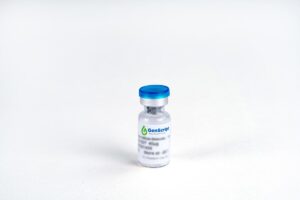
GenCRISPR™ SaCas9 Antibody (11C12), mAb, Mouse
$85.39 Add to cart View Product DetailsThe product is specific for Staphylococcus aureus CRISPR/Cas9. This antibody binds with recombinant Staphylococcus aureus CRISPR/Cas9 protein in ELISA and Endogenous overexpressed Staphylococcus aureus CRISPR/Cas9 in immunofluorescence, western blot, immunoprecipitation.
-

GenCRISPR™ SaCas9 Antibody (26H10), mAb, Mouse
$85.39 Add to cart View Product DetailsThe product is specific for Staphylococcus aureus CRISPR/Cas9. This antibody binds with recombinant Staphylococcus aureus CRISPR/Cas9 protein in ELISA and Endogenous overexpressed Staphylococcus aureus CRISPR/Cas9 in immunofluorescence, western blot.
-

GenCRISPR™ SpCas9 Antibody (14B6), mAb, Mouse
$85.39 Add to cart View Product DetailsThe product is specific for Streptococcus pyogenes CRISPR/Cas9. This antibody binds with recombinant Streptococcus pyogenes CRISPR/Cas9 protein in ELISA and Endogenous overexpressed Streptococcus pyogenes CRISPR/Cas9 in immunofluorescence, western blot.
-

GenCRISPR™ SpCas9 Antibody (4A1), mAb, Mouse
$85.39 Add to cart View Product DetailsThe product is specific for Streptococcus pyogenes CRISPR/Cas9. This antibody binds with recombinant Streptococcus pyogenes CRISPR/Cas9 protein in ELISA and Endogenous overexpressed Streptococcus pyogenes CRISPR/Cas9 in immunofluorescence, western blot.
-

GenCRISPR™ Ultra eSpCas9-2NLS-basic GMP
$1,461.94 Add to cart View Product DetailsGenCRISPR™ Ultra eSpCas9-2NLS-basic GMP is utilized for CRISPR gene editing applications. The Cas9 nuclease forms a stable ribonucleoprotein (RNP) complex with the guide RNA (gRNA) component. With the help of two nuclear localization signals (NLS) expressed with the Cas9 nuclease, the RNP complex enters the nucleus and cleaves target gene. When compared with a plasmid-based delivery system, the RNP delivery system has been observed to increase the on-target gene editing efficiency and decrease off-target effects.
-

GenCRISPR™ Ultra eSpCas9-2NLS-basic GMP
$180.26 Add to cart View Product DetailsGenCRISPR™ Ultra eSpCas9-2NLS-basic GMP is utilized for CRISPR gene editing applications. The Cas9 nuclease forms a stable ribonucleoprotein (RNP) complex with the guide RNA (gRNA) component. With the help of two nuclear localization signals (NLS) expressed with the Cas9 nuclease, the RNP complex enters the nucleus and cleaves target gene. When compared with a plasmid-based delivery system, the RNP delivery system has been observed to increase the on-target gene editing efficiency and decrease off-target effects.
-

GenCRISPR™ Ultra eSpCas9-2NLS-basic GMP
$858.19 Add to cart View Product DetailsGenCRISPR™ Ultra eSpCas9-2NLS-basic GMP is utilized for CRISPR gene editing applications. The Cas9 nuclease forms a stable ribonucleoprotein (RNP) complex with the guide RNA (gRNA) component. With the help of two nuclear localization signals (NLS) expressed with the Cas9 nuclease, the RNP complex enters the nucleus and cleaves target gene. When compared with a plasmid-based delivery system, the RNP delivery system has been observed to increase the on-target gene editing efficiency and decrease off-target effects.
-

GenCRISPR™ Ultra eSpCas9-2NLS-GMP
$5,951.25 Add to cart View Product DetailsGenCRISPR™ Ultra eSpCas9-2NLS-GMP is utilized for CRISPR gene editing applications. The Cas9 nuclease forms a stable ribonucleoprotein (RNP) complex with the guide RNA (gRNA) component. With the help of two nuclear localization signals (NLS) expressed with the Cas9 nuclease, the RNP complex enters the nucleus and cleaves target gene. When compared with a plasmid-based delivery system, the RNP delivery system has been observed to increase the on-target gene editing efficiency and decrease off-target effects.
-

GenCRISPR™ Ultra eSpCas9-2NLS-GMP
$11,126.25 Add to cart View Product DetailsGenCRISPR™ Ultra eSpCas9-2NLS-GMP is utilized for CRISPR gene editing applications. The Cas9 nuclease forms a stable ribonucleoprotein (RNP) complex with the guide RNA (gRNA) component. With the help of two nuclear localization signals (NLS) expressed with the Cas9 nuclease, the RNP complex enters the nucleus and cleaves target gene. When compared with a plasmid-based delivery system, the RNP delivery system has been observed to increase the on-target gene editing efficiency and decrease off-target effects.
-

GenCRISPR™ Ultra eSpCas9-2NLS-Research
$659.81 Add to cart View Product DetailsThe GenCRISPR™
Ultra eSpCas9 product line provides customers with a selection of research use,
basic GMP and GMP compliant Cas9 nucleases. The Cas9 protein can be formed with
the guide RNA into a ribonucleoprotien (RNP) complex. The use of an RNP complex
to perform gene editing has been shown to reduce the challenges encountered
with other CRISPR gene editing techniques such as viral and plasmid delivery.
Challenges include off-target effects, cell viability and transcription/translational
challenges.
GenCRISPR™
Ultra eSpCas9-2NLS is a mutant form of Cas9 nuclease and is produced by
expression in an E. coli strain
carrying a plasmid encoding the eSpCas9 gene from Streptococcus pyogenes with double-ended nuclear localization
signal (NLS). GenCRISPR™ Ultra eSpCas9-2NLS delivers higher fidelity and less
off-target activity than wild-type SpCas9 nuclease. -

GenCRISPR™ Ultra eSpCas9-2NLS-Research
$1,116.94 Add to cart View Product DetailsThe GenCRISPR™
Ultra eSpCas9 product line provides customers with a selection of research use,
basic GMP and GMP compliant Cas9 nucleases. The Cas9 protein can be formed with
the guide RNA into a ribonucleoprotien (RNP) complex. The use of an RNP complex
to perform gene editing has been shown to reduce the challenges encountered
with other CRISPR gene editing techniques such as viral and plasmid delivery.
Challenges include off-target effects, cell viability and transcription/translational
challenges.
GenCRISPR™
Ultra eSpCas9-2NLS is a mutant form of Cas9 nuclease and is produced by
expression in an E. coli strain
carrying a plasmid encoding the eSpCas9 gene from Streptococcus pyogenes with double-ended nuclear localization
signal (NLS). GenCRISPR™ Ultra eSpCas9-2NLS delivers higher fidelity and less
off-target activity than wild-type SpCas9 nuclease. -

GenCRISPR™ Ultra eSpCas9-2NLS-Research
$4,627.31 Add to cart View Product DetailsThe GenCRISPR™
Ultra eSpCas9 product line provides customers with a selection of research use,
basic GMP and GMP compliant Cas9 nucleases. The Cas9 protein can be formed with
the guide RNA into a ribonucleoprotien (RNP) complex. The use of an RNP complex
to perform gene editing has been shown to reduce the challenges encountered
with other CRISPR gene editing techniques such as viral and plasmid delivery.
Challenges include off-target effects, cell viability and transcription/translational
challenges.
GenCRISPR™
Ultra eSpCas9-2NLS is a mutant form of Cas9 nuclease and is produced by
expression in an E. coli strain
carrying a plasmid encoding the eSpCas9 gene from Streptococcus pyogenes with double-ended nuclear localization
signal (NLS). GenCRISPR™ Ultra eSpCas9-2NLS delivers higher fidelity and less
off-target activity than wild-type SpCas9 nuclease. -

GenCRISPR™ Ultra eSpCas9-N-NLS Research, tag-free
$659.81 Add to cart View Product DetailsThe GenCRISPR™
Ultra eSpCas9 product line provides customers with a selection of research use,
basic GMP and GMP compliant Cas9 nucleases. The Cas9 protein can be formed with
the guide RNA into a ribonucleoprotien (RNP) complex. The use of an RNP complex
to perform gene editing has been shown to reduce the challenges encountered
with other CRISPR gene editing techniques such as viral and plasmid delivery.
Challenges include off-target effects, cell viability and transcription/translational
challenges.
GenCRISPR™ Ultra eSpCas9-N-NLS
Research, tag-free is a mutant form of Cas9
nuclease and is produced by expression in an E. coli strain carrying a plasmid encoding the eSpCas9 gene from Streptococcus pyogenes with an N-terminal
nuclear localization signal (N-NLS). GenCRISPR™ Ultra eSpCas9-N-NLS Research,
tag-free delivers higher fidelity
and less off-target activity than wild-type SpCas9 nuclease. -

GenCRISPR™ Ultra eSpCas9-N-NLS Research, tag-free
$1,116.94 Add to cart View Product DetailsThe GenCRISPR™
Ultra eSpCas9 product line provides customers with a selection of research use,
basic GMP and GMP compliant Cas9 nucleases. The Cas9 protein can be formed with
the guide RNA into a ribonucleoprotien (RNP) complex. The use of an RNP complex
to perform gene editing has been shown to reduce the challenges encountered
with other CRISPR gene editing techniques such as viral and plasmid delivery.
Challenges include off-target effects, cell viability and transcription/translational
challenges.
GenCRISPR™ Ultra eSpCas9-N-NLS
Research, tag-free is a mutant form of Cas9
nuclease and is produced by expression in an E. coli strain carrying a plasmid encoding the eSpCas9 gene from Streptococcus pyogenes with an N-terminal
nuclear localization signal (N-NLS). GenCRISPR™ Ultra eSpCas9-N-NLS Research,
tag-free delivers higher fidelity
and less off-target activity than wild-type SpCas9 nuclease. -

GenCRISPR™ Ultra eSpCas9-N-NLS Research, tag-free
$4,627.31 Add to cart View Product DetailsThe GenCRISPR™
Ultra eSpCas9 product line provides customers with a selection of research use,
basic GMP and GMP compliant Cas9 nucleases. The Cas9 protein can be formed with
the guide RNA into a ribonucleoprotien (RNP) complex. The use of an RNP complex
to perform gene editing has been shown to reduce the challenges encountered
with other CRISPR gene editing techniques such as viral and plasmid delivery.
Challenges include off-target effects, cell viability and transcription/translational
challenges.
GenCRISPR™ Ultra eSpCas9-N-NLS
Research, tag-free is a mutant form of Cas9
nuclease and is produced by expression in an E. coli strain carrying a plasmid encoding the eSpCas9 gene from Streptococcus pyogenes with an N-terminal
nuclear localization signal (N-NLS). GenCRISPR™ Ultra eSpCas9-N-NLS Research,
tag-free delivers higher fidelity
and less off-target activity than wild-type SpCas9 nuclease. -

GenCRISPR™ Ultra NLS-Cas9-basic GMP
$1,461.94 Add to cart View Product DetailsGenCRISPR™ Ultra NLS-Cas9-basic GMP is utilized for CRISPR gene editing applications. The Cas9 nuclease forms a stable ribonucleoprotein (RNP) complex with the guide RNA (gRNA) component. With the help of nuclear localization signal (NLS) expressed with the Cas9 nuclease, the RNP complex enters the nucleus and cleaves the target gene. When compared with a plasmid-based delivery system, the RNP delivery system has been observed to increase the on-target gene editing efficiency and decrease off-target effects.
-

GenCRISPR™ Ultra NLS-Cas9-basic GMP
$180.26 Add to cart View Product DetailsGenCRISPR™ Ultra NLS-Cas9-basic GMP is utilized for CRISPR gene editing applications. The Cas9 nuclease forms a stable ribonucleoprotein (RNP) complex with the guide RNA (gRNA) component. With the help of nuclear localization signal (NLS) expressed with the Cas9 nuclease, the RNP complex enters the nucleus and cleaves the target gene. When compared with a plasmid-based delivery system, the RNP delivery system has been observed to increase the on-target gene editing efficiency and decrease off-target effects.
-

GenCRISPR™ Ultra NLS-Cas9-basic GMP
$858.19 Add to cart View Product DetailsGenCRISPR™ Ultra NLS-Cas9-basic GMP is utilized for CRISPR gene editing applications. The Cas9 nuclease forms a stable ribonucleoprotein (RNP) complex with the guide RNA (gRNA) component. With the help of nuclear localization signal (NLS) expressed with the Cas9 nuclease, the RNP complex enters the nucleus and cleaves the target gene. When compared with a plasmid-based delivery system, the RNP delivery system has been observed to increase the on-target gene editing efficiency and decrease off-target effects.
-

GenCRISPR™ Ultra NLS-Cas9-GMP
$5,951.25 Add to cart View Product DetailsGenCRISPR™ Ultra NLS-Cas9-GMP is utilized for CRISPR gene editing applications. It is manufactured in compliance with ISO 13485 and GMP quality management system standards and with stringent process controls and complete documentation records. This product is a ideal choice for most CRISPR gene editing applications where high editing efficiency is preferred.
-

GenCRISPR™ Ultra NLS-Cas9-GMP
$11,126.25 Add to cart View Product DetailsGenCRISPR™ Ultra NLS-Cas9-GMP is utilized for CRISPR gene editing applications. It is manufactured in compliance with ISO 13485 and GMP quality management system standards and with stringent process controls and complete documentation records. This product is a ideal choice for most CRISPR gene editing applications where high editing efficiency is preferred.
-

GenCRISPR™ Ultra NLS-Cas9-Research
$599.44 Add to cart View Product DetailsThe
GenCRISPR™ Ultra Cas9 product line provides customers with a selection of
research use, GMP preclinical and GMP compliant Cas9 nucleases. The Cas9
protein can be formed with the guide RNA into a ribonucleoprotien (RNP)
complex. The use of an RNP complex to perform gene editing has been shown to
reduce the challenges encountered with other CRISPR gene editing techniques
such as viral and plasmid delivery. Challenges include off-target effects, cell
viability and trascprition/translational challenges.
GenCRISPR™ Ultra Cas9 is
produced by expression in an E. coli
strain carrying a plasmid encoding the Cas9 gene from Streptococcus pyogenes with an N-terminal nuclear localization
signal (NLS). -

GenCRISPR™ Ultra NLS-Cas9-Research
$1,004.81 Add to cart View Product DetailsThe
GenCRISPR™ Ultra Cas9 product line provides customers with a selection of
research use, GMP preclinical and GMP compliant Cas9 nucleases. The Cas9
protein can be formed with the guide RNA into a ribonucleoprotien (RNP)
complex. The use of an RNP complex to perform gene editing has been shown to
reduce the challenges encountered with other CRISPR gene editing techniques
such as viral and plasmid delivery. Challenges include off-target effects, cell
viability and trascprition/translational challenges.
GenCRISPR™ Ultra Cas9 is
produced by expression in an E. coli
strain carrying a plasmid encoding the Cas9 gene from Streptococcus pyogenes with an N-terminal nuclear localization
signal (NLS). -

GenCRISPR™ Ultra NLS-Cas9-Research
$4,196.06 Add to cart View Product DetailsThe
GenCRISPR™ Ultra Cas9 product line provides customers with a selection of
research use, GMP preclinical and GMP compliant Cas9 nucleases. The Cas9
protein can be formed with the guide RNA into a ribonucleoprotien (RNP)
complex. The use of an RNP complex to perform gene editing has been shown to
reduce the challenges encountered with other CRISPR gene editing techniques
such as viral and plasmid delivery. Challenges include off-target effects, cell
viability and trascprition/translational challenges.
GenCRISPR™ Ultra Cas9 is
produced by expression in an E. coli
strain carrying a plasmid encoding the Cas9 gene from Streptococcus pyogenes with an N-terminal nuclear localization
signal (NLS). -
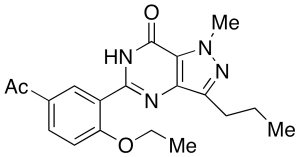
Gendenafil
$212.18 Add to cart View Product DetailsMolecular Formula : C19 H22 N4 O3
-

Gendenafil
$369.15 Add to cart View Product DetailsMolecular Formula : C19 H22 N4 O3
-

Gendenafil
$921.15 Add to cart View Product DetailsMolecular Formula : C19 H22 N4 O3
-

GENECLEAN SPIN New Wash
$44.60 Add to cart View Product DetailsWash solution for use with GENECLEAN SPIN Glassmilk.
-

GENECLEAN SPIN NEW WASH
$91.77 Add to cart View Product DetailsGENECLEAN SPIN NEW WASH
-

GENECLEAN TURBO 96 Kit
$166.58 Add to cart View Product Details- Designed to optimally purify DNA fragments from 100 bp to 300 kb. No carryover of matrix into DNA solution is found.
- Works with either centrifuge or vacuum system.
-

GENECLEAN TURBO 96 Kit
$626.43 Add to cart View Product Details- Designed to optimally purify DNA fragments from 100 bp to 300 kb. No carryover of matrix into DNA solution is found.
- Works with either centrifuge or vacuum system.
-
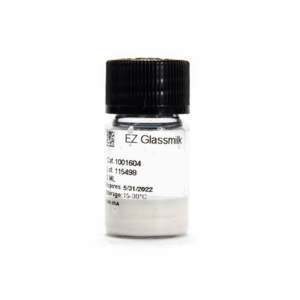
GENECLEAN® EZ-Glassmilk silica matrix
$148.79 Add to cart View Product DetailsAaqueous suspension of proprietary silica matrix that has been treated so that it can be easily resuspended by hand.
-
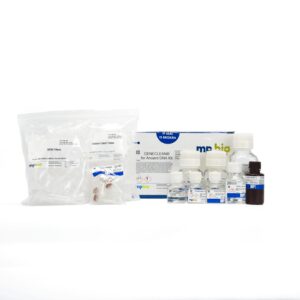
GENECLEAN® for Ancient DNA Kit
$421.27 Add to cart View Product DetailsFor isolation of up to 20 μg DNA from bones, preserved tissues, soil organisms, and animal by-products.
-
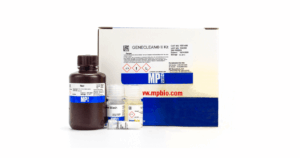
GENECLEAN® II Kit
$212.82 Add to cart View Product DetailsFor the rapid purification of DNA from TAE and TBE agarose gels. Optimal purification of 200 bp to 20 kb DNA. Each spin column can bind up to 10 μg of DNA. Kit can also be used to purify DNA from polyacrylamide gels


